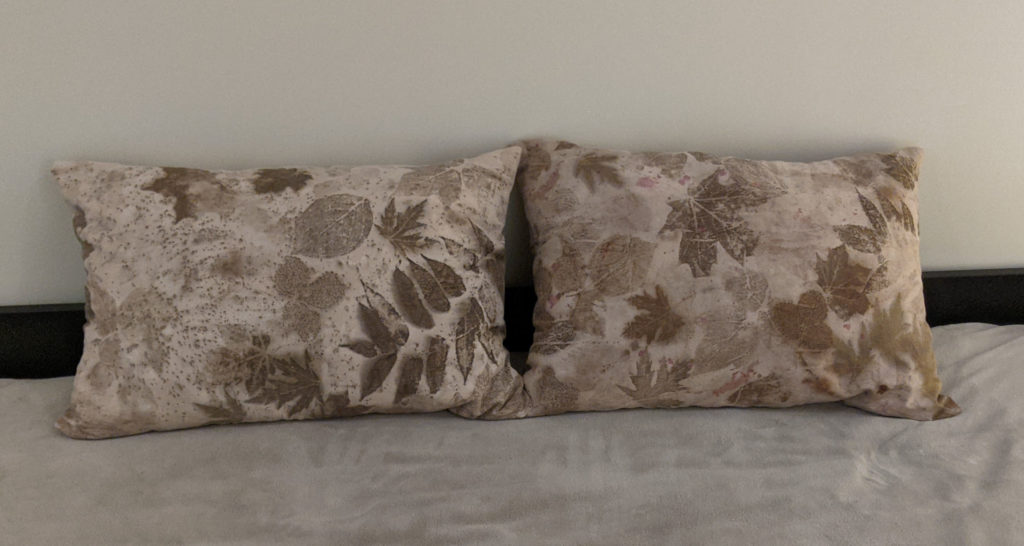
Cotton fabric is a fabric of plant origin. Dyeing fabrics of plant origin is more difficult than dyeing fabrics of wool or silk. It is very important to thoroughly clean the cotton fabric from various additives, which are used by fabric manufacturers to give fabrics a nice appearance. Usually, cotton fabric is washed in a boiling solution of washing soda or laundry soap for about one hour. After washing, the fabric is kept in a solution of alum mordant. Then the cotton fabric must be dried before dyeing with natural dyes. This was how I prepared a piece of thick cotton fabric.
I decided to pre-dye the entire piece of fabric in natural dye. I prepared a decoction of buckthorn bark and boiled the fabric in it. The fabric dyed yellow. I was making an eco-dyeing experiment on cotton in the winter when there were no fresh leaves, so I used dry leaves that I collected in the summer. I pre-soaked the leaves in a warm weak solution of iron for one day. I put a plastic wrap on the table, spread my dyed cotton fabric on it. Next, I moistened the fabric from a spray bottle to make the fabric damp but not wet. Then I took the leaves from the solution, dried them with a napkin, and laid them on the surface of the fabric. Between the leaves, I poured some dry tea and dried flower petals. From above, I covered the leaves with napkins moistened with a weak solution of tannin. Tannin, also called tannic acid used as mordants in dyeing. Tannin occurs normally in the roots, wood, bark, leaves, and fruit of many plants. I pressed the napkins with tannin tightly to the fabric with my hands. I then folded the fabric neatly, formed a roll, and wrapped the roll tightly in plastic wrap. I lowered the roll into a large pot, poured water so that it did not touch the fabric, and put it on the stove. I steamed my fabric in a low boil for about 1.5 hours. After that, I cooled my roll completely and unrolled it.

The result was not what I imagined, but quite good. The leaves gave a mostly dark olive color but the background of the fabric turned out to be beige instead of yellow. A shadow has formed along the contour of the leaves making the leaves look three-dimensional. I washed the fabric in hot water with aggressive soap. Despite that, the prints almost did not lose their brightness. I sewed two pillowcases using this fabric for my interior pillows.

The pillows live currently in my house and delight their creator.
